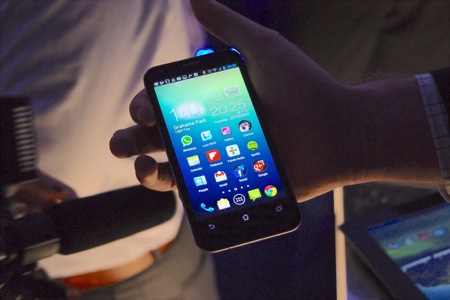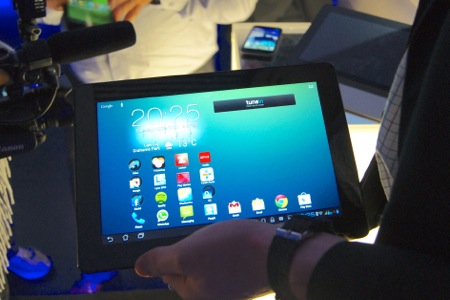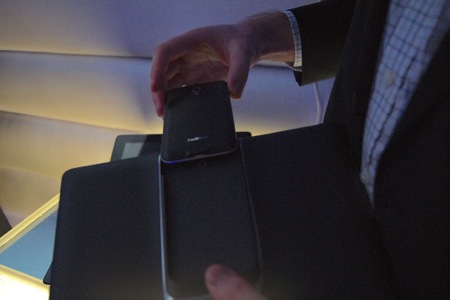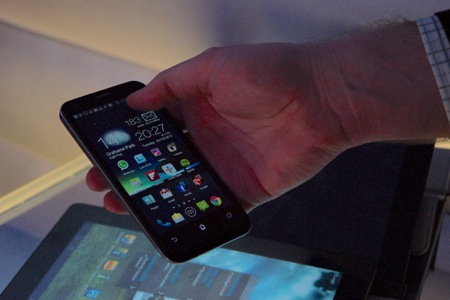Hands-on with the Asus Padfone 2 smartphone/tablet combo
This time it's even going on sale!

While attending an Asus event recently to see the new Vivo Tab RT, I also got a chance to look at the forthcoming Padfone 2, Asus's second attempt to combine the best of the smartphone and tablet world into one package.
Its price hasn't yet been revealed, but while it's certain to be cheaper than the sum of its parts it's unlikely to be cheap.
The Padfone 2 is an incredibly powerful beast, even as a standalone smartphone, thanks to the latest Qualcomm Snapdragon S4 quad-core processor and Adreno 320 graphics processor. These should make gaming in smartphone or tablet mode quite breathtaking.

The Padfone 2 also comes with a Sharp-built Super IPS+ LCD display, rendering 1280x720 pixels and offering an extremely high level of brightness (550 nits), supposedly without impacting the battery as much as rival displays.
In a darkened room it was far too bright, and the maximum brightness mode is intended primarily for outdoor use.

With such a powerful processor and bright display, the phone also has a 2,140mAh capacity battery to increase the chance of getting a day or two of usage between charges. This is especially useful given that the Padfone 2 is also LTE-compatible, including support for EE's 4GEE network and encouraging more data usage.
The specs of the smartphone are clearly impressive, but as the name implies there's a second part of the package. The Padfone 2 station is the ten-inch tablet dock (with a slightly dimmer display, because it's unlikely to be used outdoors) that the phone slots into.
It's a firm fit, with no chance of the phone slipping out even when it's turned upside down. Essentially, the Padfone 2 station is nothing more than a screen and a secondary battery, with all the processing power managed by the phone.
When you place the phone in the dock, or remove it, the switch takes around a second, which Asus pointed out to me is double the speed of the original Padfone.

With a further 5,000mAh battery inside the tablet station, this is where things get quite clever. You can opt for the device to intelligently balance the battery life so as not to drain the phone battery for later removal, or you can opt to use tablet as a somewhat glorified battery charger when it isn't being used. The battery in the tablet section is enough for more than two full recharges.
Both the phone and the Padfone 2 station have an MHL connector, allowing you to connect them to an HD television.




For imaging, the tablet contains its own front-facing camera with a 1-megapixel sensor. Take the phone out and you get a 1.2-megapixel camera instead.
However, the jewel in the crown is the rear camera, which features a 13-megapixel backside illuminated image sensor from Sony, complete with a five-element lens and LED flash.
As the rear of the phone remains visible even when docked in the tablet, you can use it in either mode - but please don't. Taking photos with a tablet is just wrong.
The Padfone 2 will be running Android 4.1 (Jelly Bean) out of the box when it goes on sale in the UK in the new year, but the obvious downside is going to be the price.
Given that Asus got rather carried away with the specifications, you might want to start saving now.
You can see a demonstration video of the Padfone 2 below.

